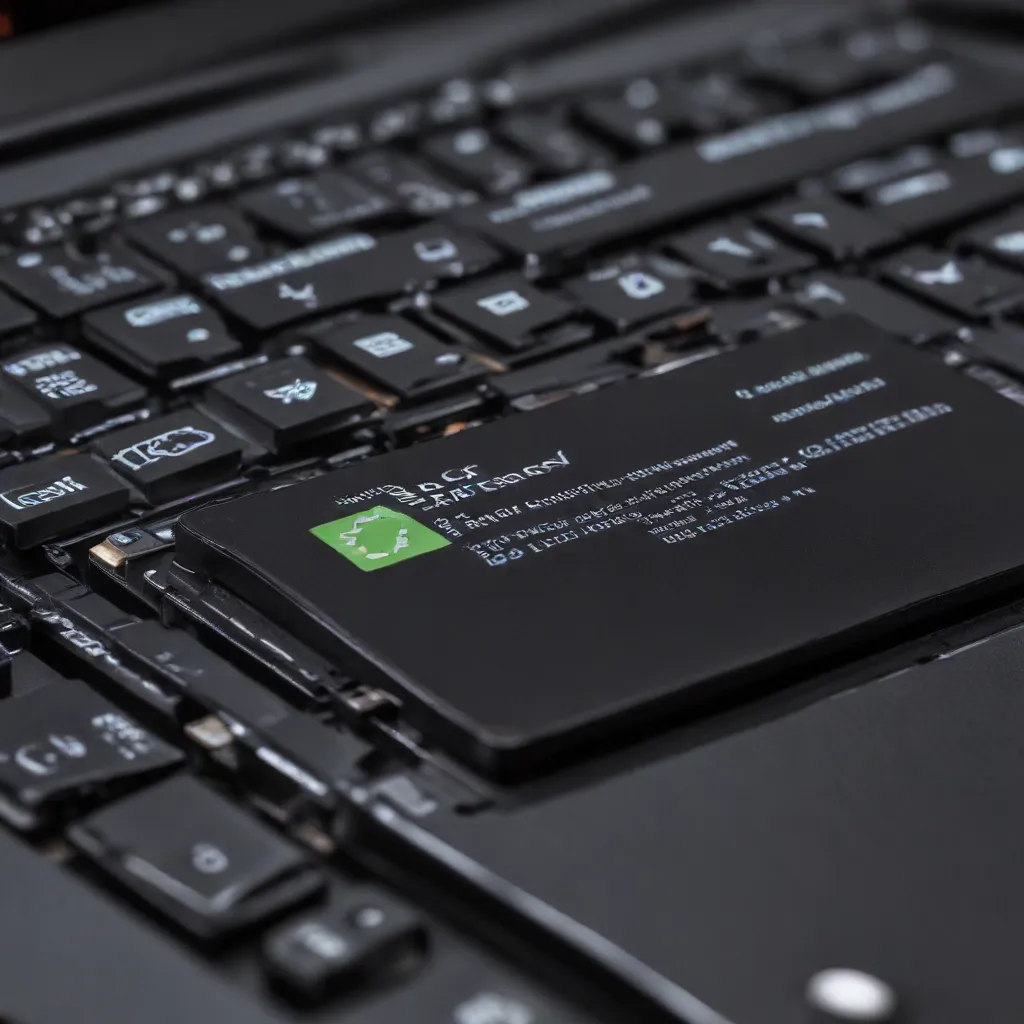
Understanding Power Consumption and Battery Life
As an experienced IT professional, I’ve often encountered users struggling with the battery life of their laptops, especially when running resource-intensive applications or using their devices on the go. The good news is that with the right power management settings and tweaks, you can significantly extend the battery runtime of your laptop, whether it’s running Windows, Linux, or any other operating system.
The key to maximizing battery life lies in understanding how your laptop’s components consume power and how the operating system can be optimized to manage that power consumption effectively. The processor, display, storage, wireless radios, and other peripherals all contribute to the overall power draw, and by fine-tuning the settings for these individual components, you can achieve substantial improvements in battery life.
Accessing and Configuring Power Management Settings
The first step in optimizing your laptop’s battery life is to access the power management settings within your operating system. In Windows, you can find these settings by navigating to the Control Panel and selecting “Power Options.” Here, you’ll be able to choose from pre-configured power plans, such as “Balanced,” “Power Saver,” and “High Performance,” each with its own set of power management settings.
In Linux, the power management settings can vary depending on the distribution and desktop environment you’re using. Many popular Linux distributions, such as Ubuntu, Fedora, and Arch Linux, come with built-in power management tools like TLP or PowerTop, which provide a comprehensive set of options for fine-tuning your system’s power consumption.
Optimizing Windows Power Management Settings
When it comes to Windows, the “Power Saver” plan is a great starting point for maximizing battery life. However, you can further customize the settings to suit your specific needs. Here are some key adjustments you can make:
-
Display Settings: Lower the screen brightness to the minimum level that still allows you to comfortably use your laptop. Additionally, you can reduce the display timeout, ensuring the screen turns off when your laptop is idle.
-
Processor Settings: Adjust the “Minimum Processor State” and “Maximum Processor State” settings to limit the processor’s power consumption. You can set the minimum to as low as 5% and the maximum to around 50-75% to strike a balance between performance and battery life.
-
Disk and Sleep Settings: Shorten the time before your laptop’s hard disk or solid-state drive (SSD) turns off, and reduce the sleep timeout to put your laptop into a low-power state more quickly when idle.
-
Disable Unnecessary Devices: If you’re not using a particular device, such as a Bluetooth adapter or a USB peripheral, consider disabling it to reduce power consumption.
-
Uninstall Unused Applications: Applications that run in the background can contribute to battery drain, so identify and uninstall any programs you’re not actively using.
Optimizing Linux Power Management Settings
In the Linux world, the power management landscape is slightly more complex, but there are several tools and techniques you can use to improve your laptop’s battery life:
-
Install and Configure TLP: TLP is a comprehensive power management tool for Linux that can significantly enhance battery life. After installing TLP, you can tweak various settings, such as CPU frequency scaling, disk spindown, and wireless device power saving.
-
Use PowerTop: PowerTop is another powerful tool that can identify and help you manage the power-hungry components on your Linux system. It provides real-time information about your laptop’s power consumption and offers suggestions for improving battery life.
-
Disable Discrete Graphics: If your laptop has a dedicated graphics card, consider disabling it and using the integrated graphics instead. This can result in significant power savings, especially if you’re not performing graphics-intensive tasks.
-
Optimize Kernel Parameters: Depending on your Linux distribution, you may be able to tweak certain kernel parameters, such as CPU frequency scaling and CPU idle state management, to further optimize power consumption.
-
Choose a Power-Efficient Linux Distribution: Some Linux distributions, such as Pop!_OS and Fedora, come with built-in power management tools and optimizations that can provide better battery life out of the box.
Undervolting and Advanced Power Optimization
For users who want to take their power optimization to the next level, undervolting can be a highly effective technique. Undervolting involves reducing the voltage supplied to the CPU and other components, which can significantly reduce power consumption without compromising performance.
Undervolting on Windows: On Windows, you can use a tool like ThrottleStop to perform safe undervolting. This allows you to fine-tune the voltage offsets for the CPU core, cache, and integrated graphics, potentially leading to significant power savings.
Undervolting on Linux: On the Linux side, tools like Intel-Undervolt and AMD-Undervolt can be used to achieve similar undervolting results. However, it’s important to exercise caution when undervolting, as excessive voltage reductions can lead to system instability or even hardware damage.
Remember, when it comes to power optimization, it’s essential to strike a balance between battery life and system performance. Experiment with the various settings and techniques, and find the right combination that meets your needs and usage patterns.
Conclusion
Maximizing battery life on laptops is a multi-faceted endeavor that requires a thorough understanding of power management settings and optimization techniques. By leveraging the built-in power management tools in your operating system, along with more advanced methods like undervolting, you can significantly extend the runtime of your laptop, whether you’re on the go or working remotely.
As an experienced IT professional, I hope this comprehensive guide has provided you with the necessary insights and practical tips to optimize your laptop’s battery life and enhance your overall computing experience. If you have any further questions or need additional assistance, feel free to reach out to the IT Fix team at https://itfix.org.uk/.












